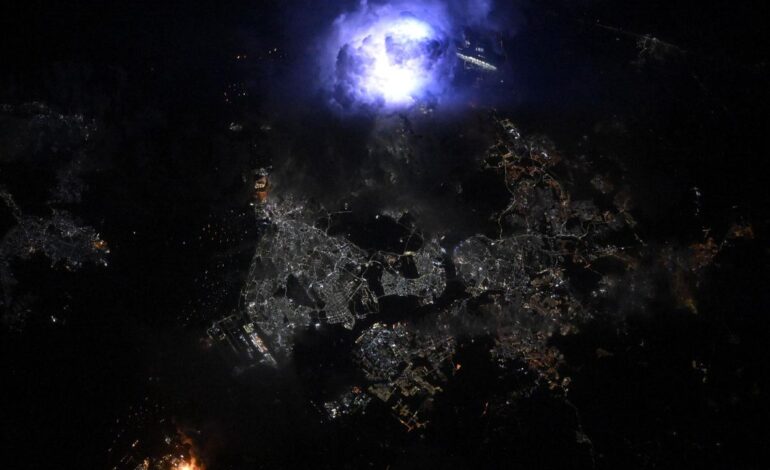Astronauts Capture Stunning Lightning Storm Above Singapore

Astronauts aboard the International Space Station (ISS) recently captured a remarkable image of a lightning storm illuminating the skies over Singapore. The photograph, taken on June 15, 2025, during the ISS’s orbit over Southeast Asia, showcases intense bursts of light flickering through the cloud cover in the region.
The ISS, positioned in low Earth orbit at approximately 259 miles (417 kilometers) above the South China Sea, provides a unique perspective for observing large-scale weather phenomena. This vantage point allows astronauts to witness significant events such as wildfires, volcanic eruptions, and severe storms, contributing valuable data to atmospheric research.
During their orbit at 3:18 a.m. local time, the crew observed an electrifying storm as flashes of lightning lit up the landscape below. The image reveals a flash that appears almost spherical, a result of lightning striking the clouds above the urban area, according to NASA.
Significance of Lightning Observations from Space
Observing lightning from space is not only visually stunning but also vital for atmospheric scientists. The storm activity in Singapore and its surrounding areas presents an opportunity to study tropical weather patterns in greater detail. While weather satellites orbit the Earth to monitor similar phenomena, the human presence aboard the ISS offers an additional layer of observation.
This combination of satellite data and human insight enhances the understanding of weather systems, allowing scientists to develop more accurate models and forecasting methods. The information gathered can be instrumental in improving predictions related to severe weather events, which are becoming increasingly crucial as climate change impacts global weather patterns.
Broader Implications for Climate Research
The insights gained from such observations are particularly relevant as scientists continue to study the Earth’s climate. The ability to analyze lightning activity not only sheds light on localized weather events but also contributes to a broader understanding of atmospheric dynamics.
As researchers strive to comprehend the complexities of our climate, the ISS serves as a vital platform for gathering essential data. The collaboration between astronauts and scientists underscores the importance of human observation in conjunction with advanced technology.
For those interested in learning more about the International Space Station and its role in studying Earth’s weather systems, NASA provides extensive resources detailing ongoing research and findings. The interplay between human observation and technological advancements remains a cornerstone of our efforts to understand and adapt to our changing climate.






